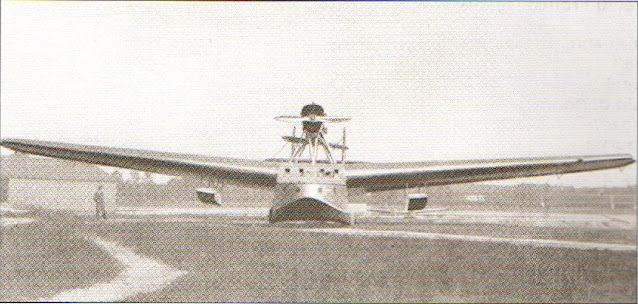Catamaranot. Two hulls or not two hulls?
Savoia Marchetti S.63
The
Savoia Marchetti S.63 was an attempt to reduce the catamaran-configured S.55 to a central monohull
seaplane, because the high command of the Italian Regia Aeronautica, initially, did not
like the twin hull arrangement proposed by SIAI.
The new seaplane maintained the engines and the wing of its twin hull predecessor, minus the central section and the twin boom tail arrangement.
The
mono-hull prototype of the S.63, that was designed for a military purpose, featured a gunner-observer bow
hatch with a machine gun. The pilots sat side by side just forward of the leading
edge, where the fuselage presented a marked step down, that is visible in the top photograph.
In view of the success that the S.55 was beginning to enjoy, after the military evaluation the S.63 project was dropped, and the aircraft returned to SIAI.
The manufacturer replaced the fuselage with one that did not have the forward step and was designed for the civilian market, with a ten-seat cabin arrangement.

Front view of the civilian version of the S.63. The elimination of the bow step allowed the cockpit to be mounted in a higher position, which also freed room for a baggage compartment.

A rear view of the civilian S.63. The pictures were taken in 1928 on the snow-covered ramp of the seaplane-port of Sant'Anna in Sesto Calende (VA), on the Ticino river.
The civilian S.63 was registered I-AABH and various attempts were made to employ it on the routes to Sardinia. However, the seaplane never saw service on a continuous basis and was demolished soon after.

December 3, 1931. On one of the rare flights of the S.63, the seaplane carried Costanzo Ciano ed Emilio De Bono to Leghorn.
This short article by Gianclaudio Polidori was on the n. 131 issue of the Ali Antiche magazine, which is an invaluable asset for anyone who wants to learn Italian aviation history.
Your comments, as usual, will be greatly appreciated.
Thanks,
L. Pavese





Comments
Post a Comment